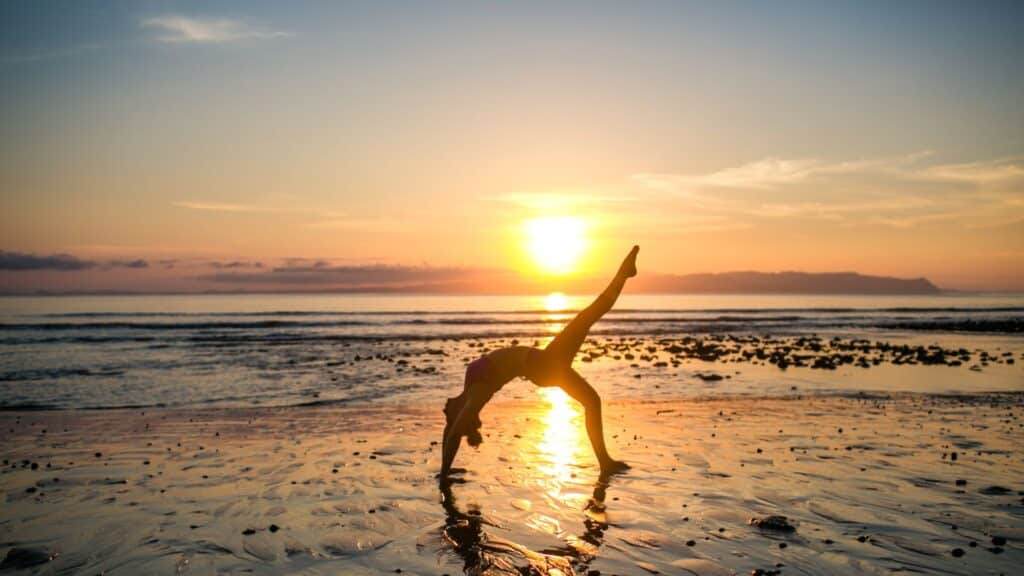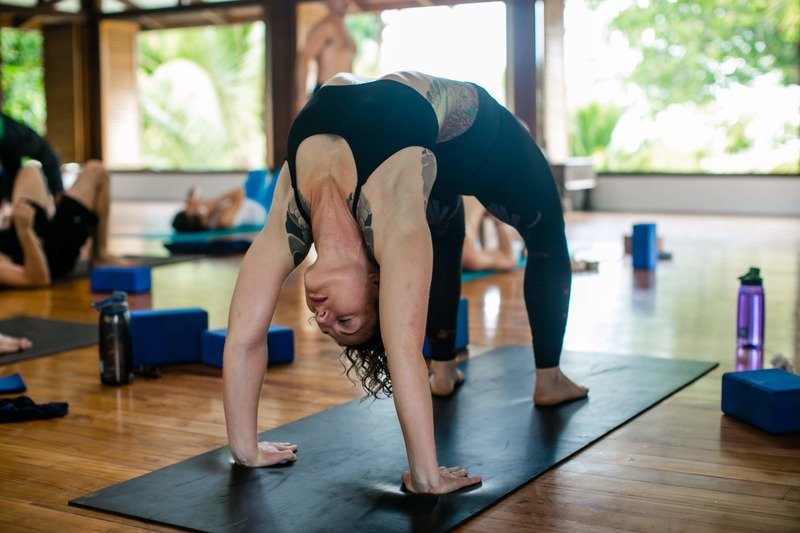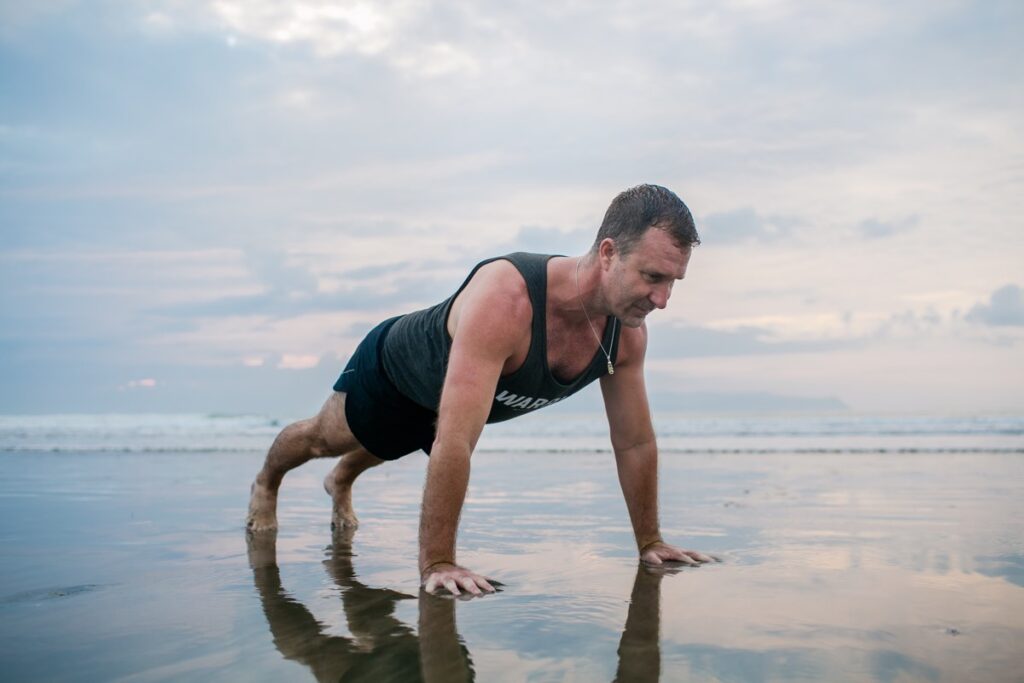Are you someone who suffers from back pain? Are you in search of a holistic way to relieve your chronic back pain? Look no further. We may have the answers you’re looking for.
If you are one of the 4 out of 5 adults who experience back pain, this article is for you.
This blog will cover:
1. What is causing your back pain
2. How you can alleviate your back pain holistically
3. How yoga can help with your back pain
4. What the best yoga poses are for back pain relief
5. How you can safely practice yoga at home
You have questions, and we’ve got answers. Keep reading!
Understanding Back Pain and Its Causes
Back pain can be a debilitating and frustrating experience. It affects individuals of all ages and activity levels. Those who spend long hours at sedentary desk jobs and those engaged in strenuous physical labor are at risk. The causes of back pain vary and can be complex, making it a widespread issue that many people face. Poor posture, muscle imbalances, injuries, and underlying medical conditions can all contribute.
Understanding the root causes of your back pain is the first step toward finding the right solution. By identifying your triggers, you can take proactive measures to alleviate your pain and improve your quality of life. If you have ever asked, “How can I relieve my back pain at home?” or “What holistic remedies can I use to treat my back pain?, then keep reading.
Although I can’t diagnose or treat back pain, I would like to help those who may need some relief. As someone who has healed from back pain, I can attest to the power of holistic approaches I used to relieve my pain, and yoga has helped tremendously.
Disclaimer: I’m not a doctor, so please don’t take this information as medical advice. Please consult with your healthcare professional before practicing to prevent further injury or harm.
How Yoga Can Help Alleviate Back Pain
Yoga emphasizes the connection between body, mind, and spirit. This practice offers a range of benefits that can help ease discomfort. With its holistic approach to physical, mental, and emotional well-being, yoga is a powerful tool. By targeting the core muscles, and improving alignment, yoga can help alleviate the tension and discomfort associated with back problems.
Practicing yoga regularly can enhance your body’s resilience, reduce inflammation, and give you a sense of balance and control over your spinal health. The gentle movements and stretches in yoga can also help release tightness in the muscles surrounding the spine, providing relief and promoting healing.
Introduction to Backbends and Their Benefits
Backbends, fall in a specific category of yoga poses. They are particularly beneficial for individuals with back pain. These postures gently soothe and strengthen the spine while opening the chest and shoulders. They also promote better posture and alignment. Backbends can also have a profound impact on your emotional health. Practicing them can help release stored tension and cultivate a sense of openness and confidence.
When you practice backbends, you not only work on your physical body. You also engage in the process of emotional release. This dual benefit makes backbends an essential part of any yoga practice aimed at alleviating back pain.
Exploring the Healing Power of Backbends
Backbends have the remarkable ability to address the root causes of back pain. They target the key muscle groups and joints responsible for spinal stability and mobility. Regularly practicing backbends can improve your range of motion, increase blood flow to the spine, and reduce the risk of future injuries.
These poses help to strengthen the muscles that support the spine, making it more resilient to everyday stresses. The mental and emotional benefits of backbends, such as improved mood and reduced stress, can further contribute to the overall healing process. Engaging in these poses can create a sense of empowerment, allowing you to take charge of your health and well-being.
Preparing Your Body for Backbends
It’s essential to properly prepare your body before practicing backbends. This involves a warm-up routine that focuses on opening up the hips, shoulders, and spine. Activating the core muscles is also important. By taking the time to warm up and gently ease into backbends, you can minimize the risk of injury and ensure a safe and effective practice.
Incorporating gentle movements that target these areas helps your body prepare for back bends. Remember, preparation is key to enjoying the full benefits while keeping your body safe and healthy.
Step-by-Step Guide to Performing Wheel Pose (Backbend)
One of the most iconic backbends is the Wheel Pose (Urdhva Dhanurasana). This asana not only strengthens the back and core but also opens up the chest and shoulders. Let’s explore the step-by-step process of safely and effectively performing the Wheel Pose:
1. Start by lying on your back with your knees bent and feet flat on the floor, hip-width apart. This position helps to create a stable base for your practice. Ensure that your feet are firmly planted on the mat. Doing so provides a solid foundation as you prepare to lift your body.
2. Engage your core by pressing your lower back into the mat. This action helps to activate your abdominal muscles, providing support for your spine. As you lift your hips off the ground, focus on maintaining this engagement to protect your lower back.
3. Place your hands beside your head, with your palms flat on the mat. Make sure your fingers are pointing toward your shoulders. This hand placement is crucial for providing the necessary leverage as you begin to lift your body. Make sure your elbows are bent and pointing upwards, creating a strong connection between your arms and the ground.
4. Press into your feet and lift your hips off the ground, engaging your core. As you push through your feet, feel the energy rising through your legs and into your hips. This movement initiates the backbend, allowing your spine to begin its gentle arch.
5. Push through your hands to lift your chest and head off the mat, creating a bridge with your body. This is where the magic happens! As you lift, focus on opening your heart and expanding your chest. This not only enhances the stretch but also promotes a sense of openness and confidence.
6. Gradually straighten your arms and legs, lifting your body into a full wheel shape. This step may take time and practice, so be patient with yourself. As you straighten your limbs, visualize your body forming a beautiful arc, with your heart reaching towards the sky.
7. Hold the pose for a few breaths, until you feel the stretch in your spine and chest. During this time, focus on your breath. Inhale deeply, allowing your lungs to fill with air, and exhale slowly, releasing any tension. This mindful breathing helps to deepen your experience in the pose.
8. To come out of the pose, gently lower your body back down to the mat, one vertebra at a time. This slow descent is important for maintaining control and protecting your spine.
Practicing the wheel pose can help you build strength and flexibility. You may also feel a sense of accomplishment and joy. You may find that it not only alleviates back pain but also enhances your overall yoga practice.
Modifications and Variations of Backbends for Different Levels
Remember that everyone’s body is unique, and what works for one person may not be suitable for another. It’s crucial to incorporate modifications and variations to find the right approach for you. For beginners, you can start with asanas, such as camel pose, sphinx pose, or supported bridge pose. With time, you can work your way up to more advanced postures. These modifications allow you to build strength and flexibility at your own pace.
Experienced yogis may opt for advanced asanas, like King Pigeon Pose, Bow, or Scorpion Pose. These backbends require a strong foundation and a deep understanding of body mechanics. So it’s essential to approach them with caution and respect for your body’s limits.
Tips for Maintaining Proper Form and Preventing Injuries During Backbends
Performing backbends with proper form is essential. You avoid injury and maximize the benefits. Here are some tips to keep in mind:
•Engage your core muscles to support the spine and maintain stability. A strong core is your best ally in protecting your back during these poses.
•Avoid hyperextending the lower back. It helps to avoid putting unnecessary strain on the lumbar region. Focus on creating a gentle arch rather than forcing your body into a deep bend.
•Keep your shoulders strong and engaged, preventing them from collapsing inwards. This will help maintain proper alignment and support your upper body.
•Listen to your body and respect its limitations. Gradually increase the depth of the backbend over time. Remember, yoga is a personal journey, and it’s important to honor where you are today. You are not auditioning for Cirque Du Soleil.
•Use props, such as blocks or straps, to assist in the pose and provide additional support. Props can help you achieve the correct alignment and make the pose more accessible.
•Always warm up thoroughly before attempting backbends and cool down afterward. A proper warm-up prepares your body for the demands of backbends. The cool-down helps to release any tension built up during practice.
Other Yoga Poses and Practices that Support Spinal Health
While backbends are the main topic, they are not the only yoga practices that can support spinal health. A yoga routine with forward folds, twists, and core-strengthening poses can also help. Incorporating a few can create a strong, balanced, and resilient spine.
Practices like breathwork, meditation, and restorative yoga can complement your backbend practice. They too promote overall physical and mental well-being. Embracing a holistic approach can help you cultivate a healthier spine and a more balanced life.
Achieving Lasting Back Pain Relief Through Yoga
Achieving lasting back pain relief requires a consistent and dedicated yoga practice. Think about incorporating yoga into your daily routine. You can start seeing significant improvements in your pain level and overall well-being.
This small commitment can lead to remarkable changes over time. Experiment with different sequences to find what works best for your body. Make yoga a sustainable part of your lifestyle. Remember, every little bit counts and even short sessions can be beneficial.
Embracing the Transformative Power of Backbends in Your Yoga Practice
As you begin your journey with backbends, embrace the transformative power they hold. Backbends don’t only address physical discomfort. They also have the potential to unlock emotional and spiritual growth. Cultivate a mindful and compassionate approach to your practice. You can experience a profound sense of liberation and empowerment. Let me remind you of your strength and resilience. I encourage you to push beyond your limits.
In this article, you learned how yoga can help alleviate your chronic back pain. You know examples of backbends and how they can help reduce your pain. We also guided you step-by-step on how to properly execute the wheel yoga pose. Now you know how to prevent further injury and how to achieve long-lasting back pain relief with yoga.
If you’re inspired to deepen your yoga practice, I invite you to explore our yoga teacher training programs. Our experienced instructors will equip you with the knowledge and skills to safely and effectively incorporate backbends and other therapeutic yoga practices into your practice and teaching.
Training at Blue Osa is not only about learning poses. It’s about understanding the philosophy behind them and how they can transform your life. Enroll today and take the first step towards unlocking your full potential on and off the mat.
By committing to this journey, you not only enhance your own practice. You will also inspire others to find their path to healing and growth through yoga. Remember, every step you take on this journey is a step towards a healthier, happier you.












